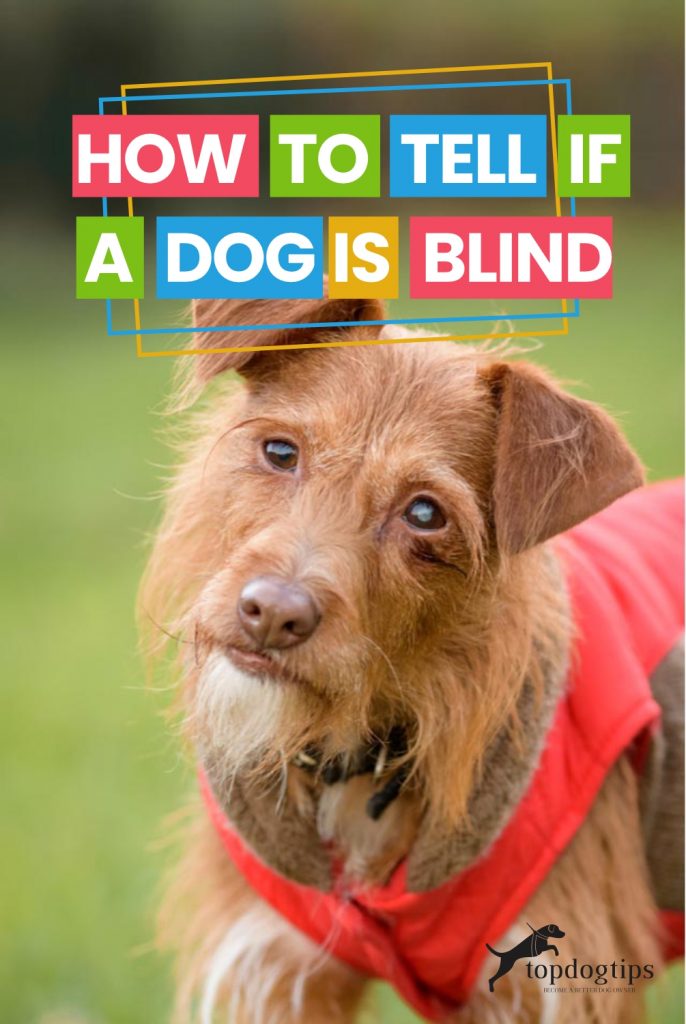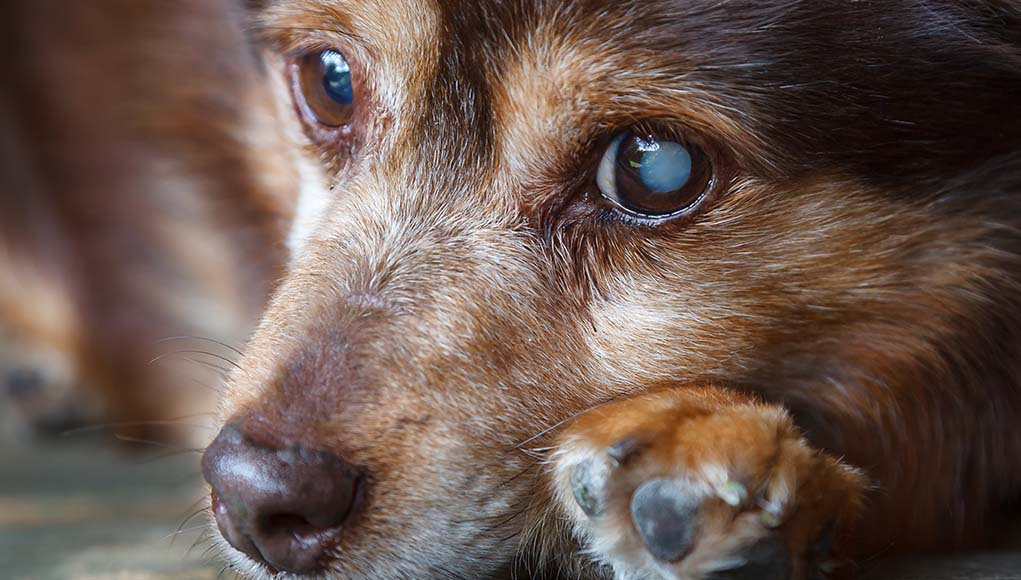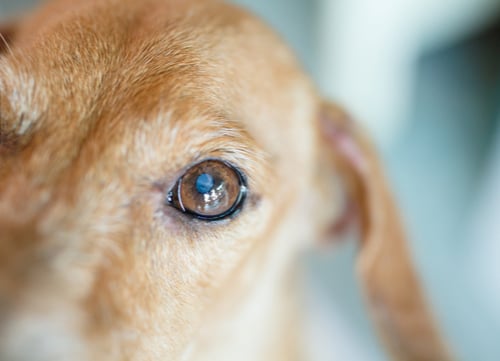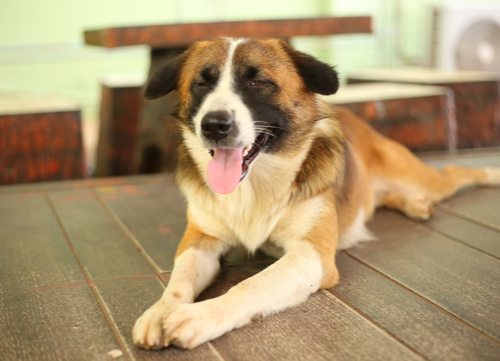When it comes to dogs and vision loss, as far as dogs are concerned, it can range, much as like in humans, to hazy vision to total blindness. In a lot of cases, it’s all part of the aging process. If a dog has an untreated eye infection or has had a stroke, this can also result in temporary or permanent blindness. Blindness can also be the secondary symptom to a disease that your canine friend already has, such as heart disease, liver disease, and kidney ailments or diabetes.
Diabetes On The Rise In Dogs And Humans
As with humans, diabetes in dogs is increasing and it is estimated that for every 10 dogs, one will become diabetic. Heredity plays a role; poor nutrition, and obesity are other factors. Out of those, three out of four dogs will develop cataracts after being diagnosed – this can result in total or partial blindness. When your dog gets cataracts, it can be the very indication that the dog is diabetic. Cataracts happen when the light can’t reach the retina, and they can develop very quickly. If you identify this issue early, you can save your dog’s sight. If his vision loss is caused by diabetes, healing can be slow and scarring could be permanent. When left untreated, cataracts can cause inflammation and lead to glaucoma. If the inflammation is not treated and glaucoma sets in, then even cataract surgery might not be possible.
Other Eye Problems And Concerns
Another eye disease is PRA, progressive retinal atrophy – where the retina cells deteriorate and cause blindness, particularly found in collies, poodles, cocker spaniels, and schnauzers. It’s a degenerative disease with no cure. If you give your dog antioxidants, you could slow the deterioration of your dog’s sight.
The worst eye disease, perhaps, is SARDS – Suddenly Acquired Retinal Degeneration Syndrome. It’s much like PRA and causes no pain, but the blindness is sudden, not gradual, with total blindness occurring in just a couple of days to a few weeks. Overweight, older, female dogs seem to be more at risk. Other conditions that affect vision can include high blood pressure, tumors, heart, kidney, liver disease, and Cushing’s disease. Whatever trouble your dog has with his vision, you need to seek veterinary treatment immediately.
A lot of owners whose dogs suffer from vision loss rush their dog to the vet claiming their dog has sudden blindness when after examination, the vets will indicate that the dog has been blind for some time. The dog has just managed to compensate so well – that only a change in their home environment and new situations might show his owners that he actually has vision problems. A lot of people consider euthanizing their blind pets because they think the quality of life will be diminished. One canine ophthalmologist says that “What I say to people is, look, your dog couldn’t read, write or drive a car, anyway. He’s already got four other senses that are better than yours. As long as you take good care of him, he’ll be okay.”
Sudden Onset Of Blindness Concerns
Sudden onset of blindness can be very hard for both the owner and the dog than the vision loss being gradual. Still, a lot of dogs do adjust, but adjustment for the dog and the owner can be harder and longer. A dog whose vision gradually diminishes has the opportunity to work on mapping out his environment and developing coping strategies without the owner’s help or knowledge, but a dog that experiences a sudden onset of blindness is plunged into darkness without any warning. It would not be unusual for him if he didn’t experience depression, anxiety, and nervousness. His owner might even have to consider erecting ‘baby gates’ for his own protection, blocking off stairs and other hazards. They will have to ensure that sharp corners on furniture are padded and make other accommodations until the dog has adjusted to his condition and mapped his environment. As an owner, you might need to limit access to only one or two rooms at a time until the dog feels comfortable there – then expanding to the rest of the house. Once your dog has mastered a controlled perimeter you can then expand the perimeter to other locations. You might need to walk him around the house “showing” him where his food and water bowls are as well as his crate and bedding.
How To Identify Vision Loss In Your Dog
- He has general clumsiness
- He startles easily
- He bumps into walls and furniture
- He has apprehensive behavior
- An inability to find toys, food, or water bowls
- He is reluctant to go out at night
- Loss of playfulness
- Excessive sleeping
- Confusion or disorientation
- Changes in the appearance of the eyes
As soon as you notice different behaviors in your dog, you need to seek immediate veterinary care. At the vet, your dog will be given a thorough physical examination – this will determine the cause as well as the extent of the dog’s vision loss. All this could include a neurological examination, blood work, cerebral spinal fluid test, CT or CAT scans or an MCR (Myopic Corneal Reshaping) as well as ophthalmologic examinations. Your vet might even refer you and your dog to a veterinary ophthalmologist for tests.
Treatment
Treatment of the eye condition will depend on the cause. While vision loss is not reversible, your dog will still be able to lead a fulfilling life after he has adjusted to his new condition. It is natural that you will be distressed at the thought of your pet’s vision loss. But you must remember that animals are perceptive and can key into your emotions. Remain calm, with a positive attitude. Dogs are able to adjust to vision loss or blindness quite quickly—assuming you help them rather than hinder them. If you coddle or baby the dog, the adjustment period can take longer and increase your dog’s dependence on you, as well as his stress levels. His confidence will be decreased. If the dog is very small, you might feel inclined to want to pick her up and take her to all the things, like to the toilet, or to her food bowls, or to find toys, in an effort to comfort him or her. Try to avoid this as it can actually disorientate the dog. Talk to your dog as you enter the room where he is, prior to touching him so that he does not get alarmed. You will be surprised at how well and quickly a dog adjusts. However, this all doesn’t mean that you shouldn’t make changes to your routine, behavior, and home to accommodate your blind pet.
There are a number of actions you can and should take to keep your pet safe and increase his confidence:
- Establishing schedules and routines
- Walking the same route on his exercise schedule
- Using aromas to help your pet to navigate
- Talking a lot to your dog to relieve his isolation
- Not rearranging the furniture in your home, padding some sharp comers on the corners of tables and chairs, for example, as well as observing outdoor hazards.
A Blind Dog Can Bring Joy And Fulfillment
You can give your dog the care and love he deserves, to keep him physically and mentally challenged so he doesn’t sink into depression. Bear in mind that blind dogs also want to have fun, just like any other dogs. Being a responsible dog owner, you are going to need to stay alert for any signs of your beloved friend going blind or starting to lose his or her vision. And of course, see your veterinarian if you suspect this is the case. That will include regular checkups as well so that you can catch anything untoward in your pet immediately – after all, this is your best friend.
READ NEXT: Dog Going Blind: How to Adjust and Help Your Blind Pet
















